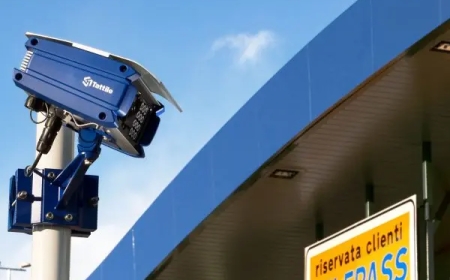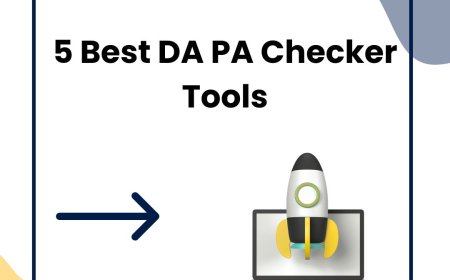Your Gateway to Antiquity: Understanding Egypt Visa on Arrival and the Spectrum of Egypt Visa Types

Egypt, a land where ancient history breathes through colossal monuments and the majestic Nile flows with timeless grace, captivates travelers from every corner of the globe.1 Before you can marvel at the pyramids or cruise the legendary river, understanding the entry requirements is paramount. This article will delve into the convenience of Egypt visa on arrival and explore the various Egypt visa types available for different travel purposes.
The Convenience of Egypt Visa on Arrival
For many nationalities, Egypt offers the straightforward option of obtaining a visa on arrival (VOA) at various international ports of entry.2 This means you don't need to apply for a visa in advance from an embassy or through the online e-Visa system. It's a popular choice for tourists seeking spontaneity and ease.
Who is Eligible for Egypt Visa on Arrival?
A significant number of countries are eligible for an Egypt visa on arrival.3 This list generally includes, but is not limited to:
-
All European Union citizens
-
Australia4
-
Canada (It's highly recommended for Canadian citizens to verify current requirements as policies can evolve; some sources suggest pre-arranged visas are now preferred or required.)
-
Georgia
-
Japan
-
New Zealand
-
Norway
-
North Macedonia5
-
Republic of Korea (South Korea)6
-
Russia
-
Serbia7
-
Ukraine
-
United States
Additionally, citizens of GCC member states (Bahrain, Kuwait, Oman, Qatar, Saudi Arabia, and the United Arab Emirates) holding a valid residence permit (valid for at least 6 months) in any of these GCC countries can also obtain a VOA for a maximum stay of 30 days.
How Does Egypt Visa on Arrival Work?
The process for obtaining a visa on arrival is relatively simple:
-
Arrive at an eligible port of entry: This typically refers to international airports like Cairo (CAI), Hurghada (HRG), Sharm El Sheikh (SSH), Luxor (LXR), and Borg El Arab (HBE) in Alexandria.
-
Locate the visa kiosks/banks: Before proceeding to immigration control, look for designated bank kiosks or visa counters in the arrival hall.8 These are clearly marked.
-
Purchase the visa sticker: The single-entry VOA typically costs USD 25.9 A multiple-entry VOA is also available for USD 60. It is crucial to have the exact amount in cash, preferably in U.S. dollars. Euros and British Pounds might be accepted at some locations, but USD is preferred.
-
Affix the visa sticker to your passport: Once purchased, the visa is a physical sticker that you adhere to a blank page in your passport.
-
Proceed to immigration: Join the queue for immigration, present your passport with the newly affixed visa, and answer any questions from the immigration officer.
-
Receive your stamp: If everything is in order, the officer will stamp your passport, indicating your entry date and the validity of your stay.
Key things to remember for VOA:
-
Passport validity: Your passport must be valid for at least six months beyond your intended departure date from Egypt and have at least one blank page for the visa sticker and stamps.10
-
Proof of onward/return travel: While not always requested, it's advisable to have a copy of your return flight ticket or onward travel itinerary.
-
Sufficient funds: Be prepared to demonstrate that you have sufficient funds to cover your stay, though this is rarely asked for at VOA.
-
Stay duration: The standard tourist Egypt visa on arrival grants a stay of up to 30 days.11
Decoding Egypt Visa Types: Beyond the VOA
While the VOA is convenient for tourism, Egypt offers various Egypt visa types catering to different purposes and durations of stay.12 Understanding these categories is essential if your travel plans extend beyond a short tourist visit or if your nationality is not eligible for VOA.
1. Tourist Visa (Single Entry & Multiple Entry):
-
Purpose: Leisure, sightseeing, visiting family and friends.
-
Validity:
-
Single Entry: Typically allows a stay of up to 30 days within a 90-day validity period from the date of issue. Once you leave, the visa is no longer valid.
-
Multiple Entry: Often valid for 180 days (6 months) from the date of issue, allowing multiple entries, with each stay not exceeding 30 days. This is ideal for those planning to enter and exit Egypt several times within a six-month window.
-
How to Obtain: Can be obtained as a visa on arrival (for eligible nationalities), through the official Egypt Visa Online (e-Visa) portal, or from an Egyptian embassy/consulate in your home country.
2. Transit Visa:
-
Purpose: For travelers passing through Egypt en route to another destination, typically for a short layover.
-
Duration: Usually valid for a very limited period, often 24-48 hours.
-
Requirements: May depend on the length of the layover and whether you intend to leave the airport transit area. Some nationalities may not need a transit visa if they remain within the airport.
3. Business Visa:
-
Purpose: Attending meetings, conferences, trade fairs, negotiations, or other business-related activities.
-
Requirements: Typically requires an invitation letter from an Egyptian company or organization, proof of financial stability, and sometimes a letter from your employer in your home country.13
-
How to Obtain: Primarily obtained from an Egyptian embassy or consulate. An e-Business visa might be available for some nationalities through the online portal.
4. Work Visa:
-
Purpose: For foreign nationals intending to undertake employment in Egypt.
-
Complexity: This is a more complex visa category requiring sponsorship from an Egyptian employer, approval from Egyptian labor authorities, and usually involves a multi-step process including a temporary entry visa followed by a work permit and residence permit after arrival.
-
How to Obtain: Must be obtained through an Egyptian embassy or consulate, often with significant involvement from the sponsoring employer in Egypt.
5. Student Visa:
-
Purpose: For international students enrolled in Egyptian educational institutions.
-
Requirements: Requires proof of admission from a recognized Egyptian university or institution, proof of financial support for tuition and living expenses, and sometimes a police clearance certificate.
-
How to Obtain: Applied for at an Egyptian embassy or consulate.
6. Residence Visa:
-
Purpose: For long-term stays in Egypt, often linked to work, study, or family reunification.
-
Validity: Can be issued for varying durations, typically renewable.
-
How to Obtain: Applied for within Egypt at the General Directorate of Passports, Immigration, and Nationality, usually after entering the country on a relevant entry visa (e.g., work visa).
7. "Sinai Only" Entry Permission:
-
Purpose: A special stamp for visitors arriving at specific South Sinai resorts (Sharm El Sheikh, Dahab, Nuweiba, Taba) for a stay of up to 14 days.
-
Eligibility: Available to citizens of many countries, including EU citizens, the US, UK, and Israel (via the Taba border crossing).
-
Restriction: This free stamp does not permit travel outside these designated South Sinai areas. If you wish to visit Cairo, Luxor, or any other part of Egypt, a full tourist visa (VOA, e-Visa, or embassy visa) is required.
Conclusion
Navigating the entry requirements for Egypt is a crucial first step in planning your journey. For many, the simplicity of the Egypt visa on arrival makes spontaneous trips to this ancient land incredibly accessible. However, for those with specific travel purposes or from countries not eligible for VOA, understanding the diverse Egypt visa types and applying through the appropriate channels ensures a smooth and compliant entry. Always check the latest requirements from official Egyptian government sources before your travel date, ensuring your adventure into the heart of history begins without a hitch.






































